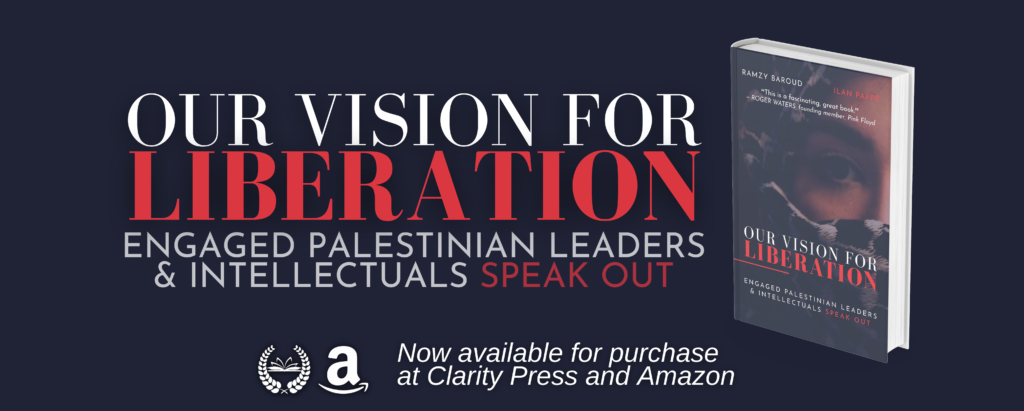
Reviewed by Miriam Walton and Warren Bardsley
‘Miriam’s Legacy’ – Patricia Rantisi. Author House, 2007. (ISBN 978-14343-0412-4)
2008 marked the sixtieth year of the birth of the State of Israel, but also the year that Palestinians commemorate the ‘Nakba’ (catastrophe). 1948 was indeed a year of utter catastrophe for the indigenous Palestinian people. Thousands of men, women and children were either massacred or driven from their towns and villages by Zionist armed forces to become refugees in Lebanon and inside Palestine itself.
Patricia Rantisi’s novel ‘Miriam’s Legacy’, based on historical facts, covers a period of almost a century and could not be more timely.
The story, told through the prism of four generations of one family, begins in 1982 in the refugee camp at Shatila, not far from Beirut, the capital of Lebanon. Hundreds of Palestinian refugees were attacked and murdered by Lebanese militias as Israeli soldiers stood by and watched, including Ariel Sharon, the former Prime Minister of Israel. As a young boy, Farres is witness to this massacre and the consequential horrors to follow.
His father has already been deported, along with other members of the PLO and Farres finds himself responsible for his mother and sisters. His great-grandmother, Miriam, just before she dies, hands over a small brooch and a string of glass worry-beads as her ‘symbolic legacy’ to him, telling Farres that he must never, never forget Palestine and that if he ever is able to go there one day, to keep the beads safe.
We are taken back in time to a village in Northern Palestine, during the dying days of the Ottoman Empire, where Miriam is growing up as a simple peasant girl. She marries very young and she and her husband Amin start to raise a family in a farming community. They are Muslims, but it is a time when Jews, Christians and Muslims live and work together in relative peace and harmony, illustrated by the close friendship between Miriam and Majida, a Christian girl. But storm clouds are gathering; the events of 1948 are described in graphic detail, the incursion of Zionist forces into Haifa and northern Palestine, the forced evacuation of the indigenous population to southern Lebanon and the refugee camp of Shatila, which becomes home for Amin and Miriam and their extended family. Having lost everything in the way of possessions, they are determined not to lose their dignity and they are always living in hope that it will not be long before they can return to their beloved homeland.
Returning to the story of Farres in the 1980’s, we find him caught up in the violence. He is rescued by a British doctor, named Tom, who saves his life. Various periods of siege in the camp mean the refugees experience hard times of deprivation and almost starvation, all of which is told graphically as the years go by. Finally, Farres is encouraged and helped by Tom to go to England to pursue a medical career. He meets and marries Kate, a British journalist but with a Palestinian father, and after graduating as a doctor, Farres is invited to attend a medical symposium in Jerusalem. It gives him the opportunity to visit Palestine with his wife and daughter, Miriam, named after the great-grandmother. He is briefly and emotionally united with his family, who he hasn’t seen for many years, at the northern border of Israel, but it is a sign of the continuing tragedy of modern Palestine that their re-union must be celebrated across barbed wire. The story concludes with Farres pledging through tears to dedicate his medical skills to bring hope to the suffering people of the West Bank. Here is Miriam’s true legacy.
Through this moving and well-structured story, we hear the authentic voice of a young Palestinian man – it almost seems at times as if Patricia is able to inhabit Farres’ head.
The book is also very well researched and brings the locations in Palestine, Lebanon and England to life for the reader.
The novel manages to pack in a lot of history in a very approachable and personal way. Patricia Rantisi also conveys how intertwined are the lives and fates of Palestinian Christians and Muslims, making it clear that it is the Israeli occupation, not Islam that threatens Christians in the Holy Land. It also explodes the myth of the ‘land without a people’ perpetuated by the Zionist propaganda.
This is very much a story for our times, movingly and brilliantly told by Patricia Rantisi, now retired to the UK. She and her Palestinian husband worked with disadvantaged children in Ramallah for over thirty years.
The year 2008 also commemorated the sixtieth anniversary of the universal declaration of human rights. Those who want to know the reality and roots of one of the most persistent violations of those rights during that period would do well to read this book.
Highly recommended reading.
– Miriam Walton and Warren Bardsley are members of Friends of Sabeel UK.





